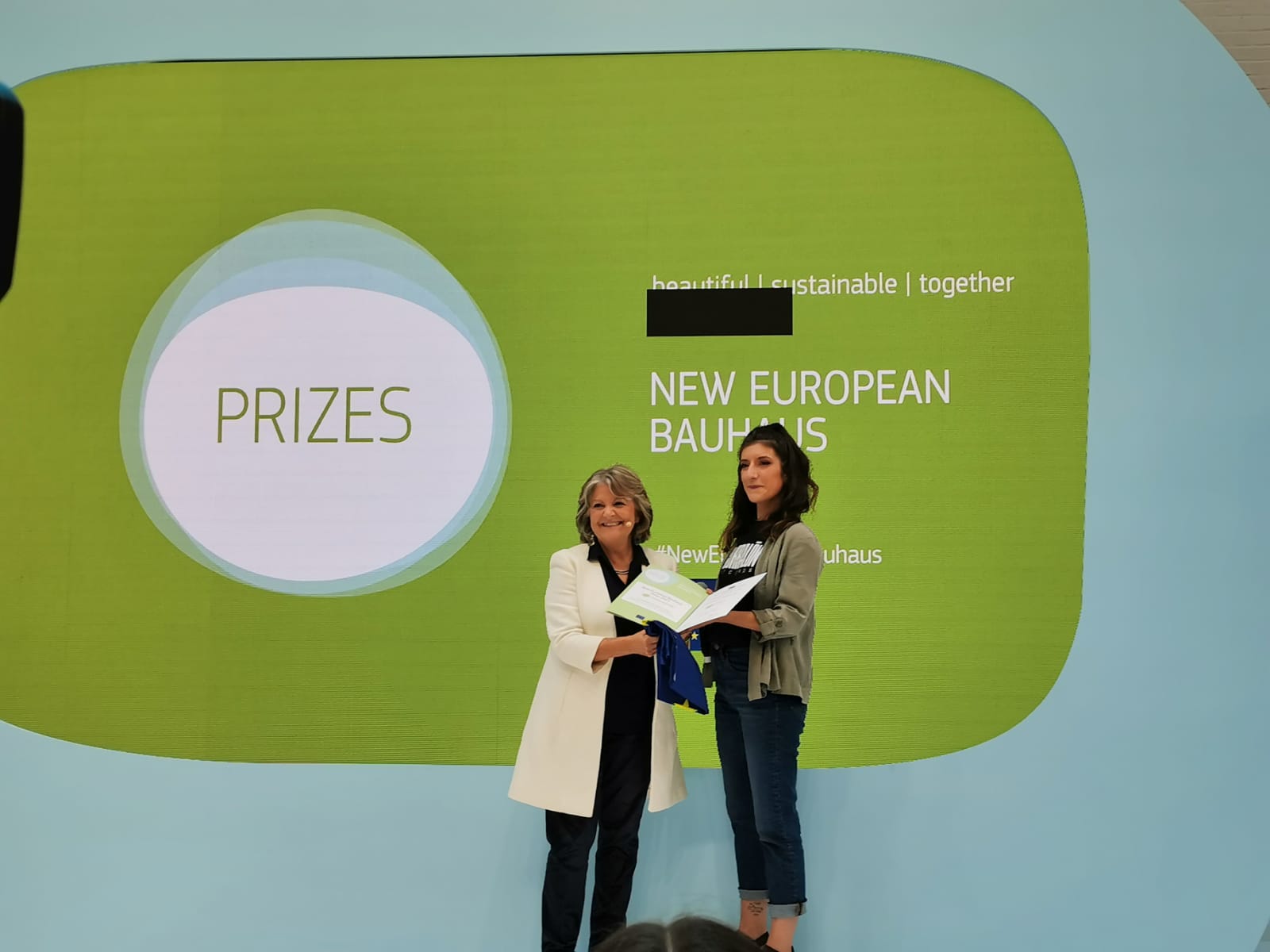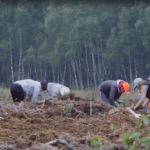One hundred years ago, the Bauhaus movement revolutionized design and architecture: its influence is still immense but now tamed to make it more habitable.
-What was the Bauhaus and what does its name mean?
The definition of the Bauhaus Movement seems simple: the origin of the term comes from a word created by the German architect Walter Gropius, founder of the Bauhaus School in 1919. It is a combination of two German words: bau, which means to build, and haus, which means house: to build a house, and represents the school of architecture, design, craftsmanship and art founded a century ago by Walter Gropius in Weimar (Germany) and closed by the Nazis 14 years later. However, its influence, which continues to this day, has made its name synonymous with revolution and radical modernization of design. A school turned into a style whose main intention was the simplicity of forms, reducing the aesthetics of the object to its functionality.
At the time of creating the term Gropius was thinking of the joint work of artists and craftsmen. The underlying idea had to do with building something new, a new society, a new feeling, a new being. It was by no means limited to an architectural construction. The Bauhaus operated between 1919 and 1933 in Weimar, Dessau and Berlin. Its spirit is linked to modernity, to the idea of creating with rebelliousness and freedom, to the desire for rupture and change.
Based on functionality and the suitability and economy of materials (metal, glass, wood), his designs were based on simple geometric figures such as the circle, the square and the triangle. In the classes, they began to work with these elementary figures and each of them was attributed a specific character. Thus, the circle was “fluid and central”, the square was “serene” and the triangle, “diagonal”.
In 1996, UNESCO declared the Bauhaus architecture in Weimar and Dessau a World Heritage Site.
Vital experiment and the timelessness of movement.
The underlying idea has to do with the possibility that a person has to change and create worlds, if he or she wants to. The key lay in the idea of change, of doing something new, of changing something. At the same time, in seeing and thinking about how something new can be created, or how that new thing we want to create should be for a given time. The Bauhaus was not a style; people wanted to create with basic forms. Eventually they started to look for new materials, and then steel chairs appeared, for example. It was about creating new things for new times.
Bauhaus is the desire and the need to create a new society, a new human being. If you research Bauhaus you will find different things every day, and that possibility is very interesting. The Bauhaus is a story without time and without end. With a feeling of freedom, of inner freedom, which is what makes creation possible. It was unusual, in those years, for women to cut their hair and wear it short; that was revolutionary. The people who came to the Bauhaus were anti-bourgeois, people with an anti attitude. People who were free, unconventional. It was unusual for the time for them to try a new lifestyle; that was also the Bauhaus.
The Bauhaus also meant a great vital experiment of a small community of young people, approximately 1,400, who, after the traumatic experience of the Great War, launched with enthusiasm to build a social utopia and new forms of coexistence. The parties held at the center acquired great fame. They were usually themed (white party, metal party, kite party) and almost always in costume. Their organization and design took weeks of work and always pursued a dual purpose: to encourage contact between the school and the population to mitigate local suspicions and to promote teamwork to serve as a catharsis for the tensions and conflicts that originated in the Bauhaus as a result of the close link between work and private life.
The Bauhaus also meant a great vital experiment of a small community of young people, approximately 1,400, who, after the traumatic experience of the Great War, launched with enthusiasm to build a social utopia and new forms of coexistence. The parties held at the center acquired great fame. They were usually themed (white party, metal party, kite party) and almost always in costume. Their organization and design took weeks of work and always pursued a dual purpose: to encourage contact between the school and the population to mitigate local suspicions and to promote teamwork to serve as a catharsis for the tensions and conflicts that originated in the Bauhaus as a result of the close link between work and private life.
New European Bauhaus Awards 2021
To get the message across in the best possible way, the Commission presented on September 16 the twenty winners of the “New European Bauhaus Awards” and the “Rising Stars of the New European Bauhaus”, which are part of and represent the culmination of the first phase of the New European Bauhaus. They recognize the best projects submitted and support the younger generation to further develop emerging concepts and ideas.
The Awards reward good practices, examples and concepts that illustrate the triad of values of the New European Bauhaus: sustainability, aesthetics and inclusion. The award ceremony took place in Brussels just one day after the adoption of a Communication on the New European Bauhaus setting out what it is, and announcing a series of policy actions and funding possibilities, with a budget of 85 million euros. Its aim is to accelerate the transformation of different economic sectors and promote sustainable projects in a wide range of areas, from construction to public spaces, fashion or architecture to provide access to goods produced with less CO2 emissions.
20 winners in 10 categories
Out of 60 shortlisted projects, the ‘New European Bauhaus Awards’ have been awarded in 10 different categories. The winners of each category will receive €30,000. For the ‘New European Bauhaus Rising Stars’ 10 prizes of €15,000 each are awarded to support concepts and ideas developed by young talents under 30 years of age.
The winners of the ‘New European Bauhaus Awards‘ per category are:
- ERDEN PURE WALLS (Austria) in the category ‘Techniques, materials and processes for construction and design’;
- GARDENS IN THE AIR (Spain) in the category ‘Buildings renovated in a spirit of circularity’;
- ROSANA (Germany) in the category ‘Solutions for the co-evolution of built environment and nature’;
- LA FÁBRIKA DE TODA LA VIDA (Spain) in the category ‘Regenerated urban and rural spaces’;
- AYR SUSTAINABILITY PLATFORM (Portugal) in the category ‘Products and life style’;
- XIFRÉ’S ROOFTOP: ‘FLOATING’ WILD GARDEN (Spain) in the category ‘Preserved and transformed cultural heritage’;
- ULIA GARDEN (Spain) in the category ‘Reinvented places to meet and share’;
- ESSERI URBANI (Italy) in the category ‘Mobilisation of culture, arts and communities’;
- APROP CIUTAT VELLA (Spain) in the category ‘Modular, adaptable and mobile living solutions’;
- DEGREE IN DESIGN. UNIVERSIDAD DE NAVARRA (Spain) in the category ‘Interdisciplinary education models’;
Nine Spanish projects were awarded in these European New Bauhaus Awards, making Spain the most awarded country by bringing together almost half of the twenty winners of this recognition, which rewards good architectural and artistic practices in line with the values of the European New Bauhaus.
Specifically, Spain has won six of the ten awards of the first edition of the New European Bauhaus Awards, which rewards each winner with 30,000 euros and a support package for communication work, and three of the ten Rising Stars of the New European Bauhaus, whose prize is 15,000 euros and support for communication.
Thus, among the first, the Spanish winners have been the Sevillian project “Jardines en el Aire”, in the category of “Renewed buildings with circular spirit”; “LaFábrika detodalavida”, from Los Santos de Maimona (Extremadura), in the section of “Regenerated urban and rural spaces”; the “Azotea de Xifré: Jardín silvestre flotante”, from Barcelona, in “Patrimonio cultural conservado y transformado”; the “Jardín de Ulía”, from San Sebastian, for “Lugares reinventados para reunirse y compartir”; and the Degree in Design of the University of Navarra, in the category of “Modelos educativos interdisciplinarios”.
Among the award-winning emerging projects, which recognize concepts and ideas developed by young people under the age of 30, the winners were “Inhabiting an enclosed landscape”, in “Construction and design techniques, materials and processes”; “Nest”, in the category of “Solutions for the joint evolution of the built environment and nature”; and “Spaces to reconnect citizens with cities”, in “Mobilization of culture, arts and communities”.
Congratulations to all !
More information:
https://elpais.com/cultura/2019/04/12/actualidad/1555023242_858556.html
https://europa.eu/new-european-bauhaus/index_es







Leave a Reply